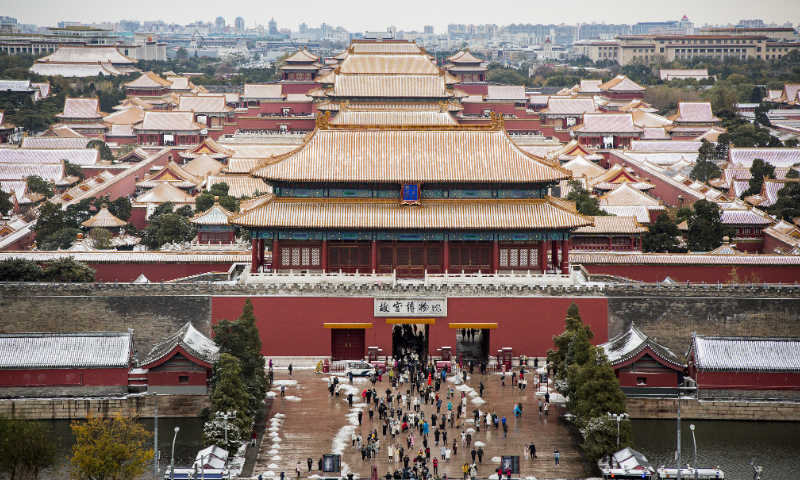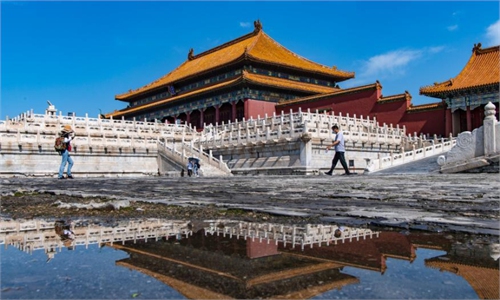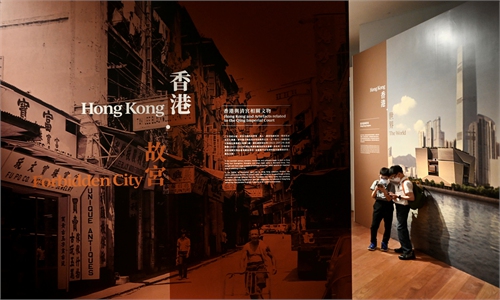
The photo taken on November 7, 2021 shows the Palace Museum in Beijing. Photo: VCG
The Taipei Palace Museum and the Palace Museum in Beijing are "like brothers," and there should be discussion and exchange of ideas with colleagues from the Taipei Palace Museum in many areas such as enhancing academic research and strengthening protection of cultural relics, Wang Xudong, director of the Palace Museum in Beijing and one of the delegates to the 20th National Congress of the Communist Party of China (CPC), said on the sidelines of the 20th CPC National Congress on Thursday.
The two museums previously had frequent and in-depth communication and cooperation, but these exchanges were temporarily suspended due to the impact of COVID-19. However, Wang said that with the normalization of epidemic prevention and control, the museums will further increase exchanges of scholars, cultural relics and other aspects.
These exchanges can promote mutual understanding between scholars and even between the Chinese mainland and Taiwan, Wang said. He hopes to have the chance to visit the Taipei Palace Museum soon.
"We share the same root and we are like brothers," Wang said. It is hoped that the Palace Museum in Beijing, the Taipei Palace Museum and the Hong Kong Palace Museum can jointly plan some exhibitions together in the future, he said.
The Hong Kong Palace Museum officially opened to the public on July 3, showcasing more than 900 precious cultural relics from the collection of the Palace Museum in Beijing. There have been more than 420,000 visits so far, which reflects local residents' interest in traditional Chinese cultural relics, and also shows that they hope to have a chance to learn about traditional Chinese culture, according to Wang.
It is a very important platform and window, which plays a vital role in cultural and art exchanges in the Hong Kong Special Administrative Region, Wang said.
China draws confidence from its 5,000 years of civilization, but this cultural confidence does not come from a "closed culture," Wang said, adding that it is forged by constant interaction with other civilizations.
In the field of foreign cultural exchange, the Palace Museum in Beijing will continue to plan exhibitions of cultural relics.
The Palace Museum has a history of more than 600 years, exhibiting 5,000 years of Chinese civilization, through which we can see the exchange and integration of people from different geographic, ethnic and religious backgrounds. Chinese civilization has been able to stay alive because of this openness and tolerance, which brings us inspiration for today, Wang said in an interview in the "Delegates' Corridor."


